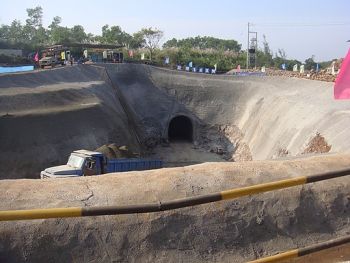|
|
| Line 13: |
Line 13: |
|
| |
|
| <!-- Introductory paragraph or topic page summary --> | | <!-- Introductory paragraph or topic page summary --> |
| "[[Construction]] of many conventional water projects such as dams, dikes, [[canals]], [[siphons]], and pumping plants requires some degree of excavation, which often extends below the local water table. The excavation can be an expensive [[operation]], depending on the required depth, subsurface materials, and [[groundwater]] conditions. Water Removal and Control (WR&C) systems are often employed along with other techniques such as unwatering methods and/or [[cutoff]] walls in controlling the water and seepage within and surrounding the excavations. WR&C systems can be constructed by a variety of methods, either singly or in combinations, to effectively remove and control groundwater to facilitate excavation and construction activities 'in the dry' and to maintain [[stability]] of excavated slopes. Effective WR&C systems are also important to construction scheduling and safety of the construction crews, downstream populations and infrastructures, and the safety of the embankment dam itself."<ref name="DS13-21">[[Design Standards No. 13: Embankment Dams (Ch. 21: Water Removal and Control: Dewatering and Unwatering Systems) | Design Standards No. 13: Embankment Dams (Ch. 21: Water Removal and Control: Dewatering and Unwatering Systems), USBR, 2014]]</ref>
| |
|
| |
| "Design of WR&C systems should rely as much on experience as on the theory and calculations. Each site is unique, and no two systems will be exactly alike. Additionally, there is no one correct design, although some designs may be more applicable than others to specific site conditions. A well-suited design may include multiple features employing different technologies and configurations to achieve the desired goals."<ref name="DS13-21"/>
| |
|
| |
|
| ==Best Practices Resources== | | ==Best Practices Resources== |
Revision as of 17:18, 6 December 2022

![]() Design of Small Dams, USBR, 1987
Design of Small Dams, USBR, 1987
![]() On-Demand Webinar: Stream Management for Dam Construction
On-Demand Webinar: Stream Management for Dam Construction
![]() On-Demand Webinar: Managing Increased Dam Safety Risk During Reconstruction
On-Demand Webinar: Managing Increased Dam Safety Risk During Reconstruction
